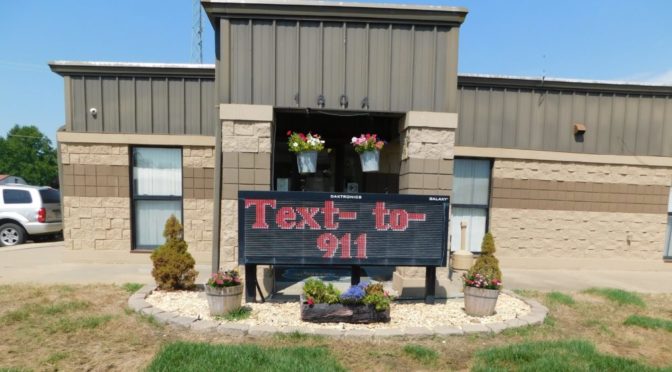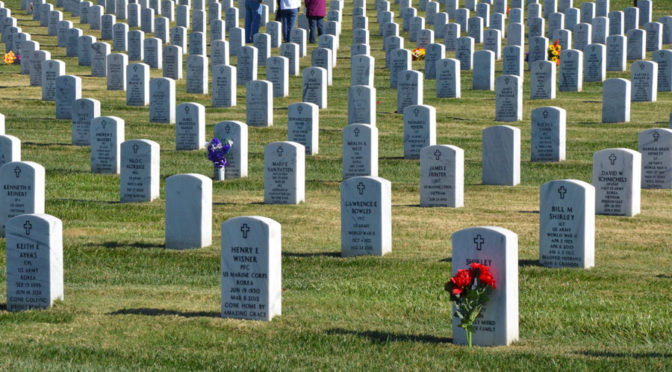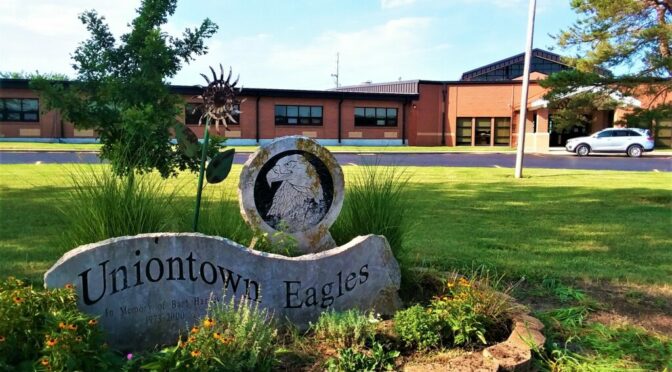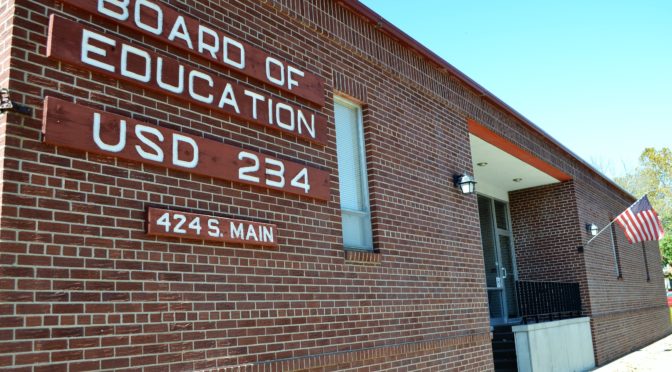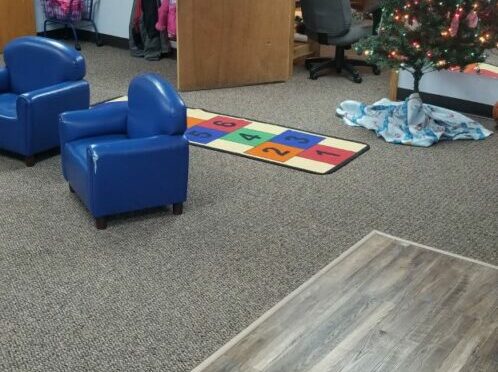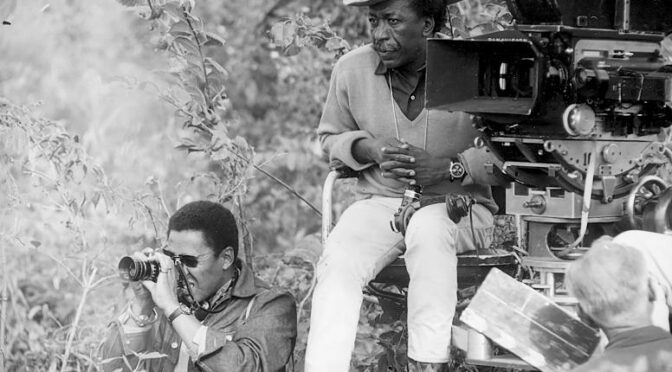Obituary of Marjorie Stringer
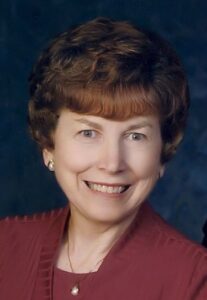
Marjorie Dee Stringer, 85, of Fort Scott passed away Tuesday, December 15, 2020, at the Presbyterian Village. She was born August 17, 1935, in Chanute, Kansas, the daughter of Joel Emmett and Irma Joy (Woodell) VanMeter. She married Wayne Stringer December 30, 1954, in Thayer, Kansas. He preceded her in death September 15, 2013.
Marjorie was a secretary and treasurer for Fort Scott High School for many years. She was a member of the First Southern Baptist Church, and she was also a member of the Iza Stompers and the City Hand Bell Choir. Marjorie was active in Starlight FCE, the Camping Club, and the Garden Club.
Marjorie is survived by her children, James Wesley Stringer of Rogers, Arkansas, Rhonda Sue Allen and husband Jim of Fort Scott, and Randall Wayne Stringer and wife Valerie of Bartlesville, Oklahoma; a brother, Dale VanMeter and wife Iris, of Post Falls, Idaho, Phyllis Johnson and husband Howard, of Bartlesville, Oklahoma; sister-in-law Maude Burns of Iola, Kansas; seven grandchildren, Chris Stringer and wife AnnDee, Elizabeth Kinnaman and husband Ryan, Jennifer Barngrover and husband Dan, Matthew Stringer and wife Kelly, Hilary Randolph and husband Preston, Scott Allen, and Marliss Allen; a step-granddaughter, Stephanie Sherrick; nine great-grandchildren, and two step-great-grandchildren.
In addition to her husband Wayne, she was also preceded in death by her parents, twin sister Marian Carson, another sister Shirley Powers, a brother Wayne VanMeter, and daughter-in-law Cynthia Stringer.
Rev. Ken Ansell will conduct private family funeral services Monday December 21, 2020, at the Konantz-Cheney Funeral Home with burial following at the Fort Scott National Cemetery. The family will receive friends Sunday evening from 4:00 until 6:00 p.m. at the funeral home. Memorial contributions may be made to the Good Samaritan Fund at Presbyterian Village or Gideons and may be left in the care of the Konantz-Cheney Funeral Home, 15 W. Wall Street, P.O. Box 309, Fort Scott, Kansas, 66701. Condolences may be submitted to the online guestbook at konantz-cheney.com.
Obituary of Margaret Lewis

Margaret Ann Lewis, age 73, resident of Ft. Scott, KS, died Wednesday, December 16, 2020, at Via Christi Hospital in Pittsburg, KS.
She was born September 3, 1947, in Ft. Scott, the daughter of John Byron “Jack” Hagood and Christina Gertrude Peters Hagood.
She graduated from FSHS. Margaret married Timmy Lewis on September 15, 1973, in Mapleton, KS. He preceded her in death on April 16, 2008.
Margaret worked much of her 30-year career in home health as a CNA for Community Care Connection. She formed many lasting relationships with the individuals she cared for.
She enjoyed playing mobile games and spending time with her family. She was a regular at Pete’s on Wall St., drinking coffee and visiting with friends early each weekday. She would go to Max’s on the weekend mornings and NuGrille daily for dinner.
She loved dogs and would always reference her son’s dogs by asking “how’s my babies doing?”
Survivors include her son, John Cauthon and wife Beth, Ft. Scott; two brothers, John Hagood and wife Barbara, Medicine Lodge, KS, and Mike Hagood, Ft. Scott; and several nieces, nephews, and in-laws. Besides her husband Timmy, she was preceded in death by both parents.
Rev. Dr. Jared Witt will conduct services will at 9:00 AM Monday, December 21st, at the Cheney Witt Chapel.
Private family burial will follow in the U. S. National Cemetery. The family will receive friends from 5:00 until 7:00 PM Sunday evening at the Cheney Witt Chapel.
Memorials are suggested to the Margaret Lewis Memorial Fund and may be left in care of the Cheney Witt Chapel, PO Box 347, 201 S. Main St., Ft. Scott, KS 66701. Words of remembrance may be submitted to the online guestbook at cheneywitt.com.
Fictional tale inspired by Southeast Kansas fried chicken
Submitted by the Crawford County Convention & Visitors Bureau (Pittsburg, Kansas)
An author with ties to Southeast Kansas just had her debut novel named Reese Witherspoon’s Book Club pick for the month of December. KJ Dell’Antonia’s fictional tale “The Chicken Sisters” was inspired by the fried chicken houses in the towns where her parents grew up.
Less than two hours south of Kansas City, and several miles away from the closest town, yet less than 600 feet apart, are Chicken Annie’s and Chicken Mary’s. Dell’Antonia’s parents are from the area, and frequently took her dining at Chicken Annie’s. Unaware of the real story of these and the other four chicken houses in the county, Dell’Antonia made up her own story.
“I always wondered why were there two chicken restaurants that were clearly completely unrelated, but obviously completely related because one is ‘Chicken Annie’s’ and one is ‘Chicken Mary’s’”, Dell’Antonia told her Facebook followers in a video posted December 2, 2020 (@KJDellAntoniaAuthor). “It stuck in my head for ages and I really wanted to find a story that I could ‘put around’ that idea of two fried chicken restaurants. Maybe because I love fried chicken. Possibly because I love Kansas. I don’t know. It just stuck with me.”
“I created Chicken Mimi’s and Chicken Frannie’s which are absolutely not Chicken Mary’s and Chicken Annie’s,” Dell’Antonia said in her video. “After I got started on the book my mom said ‘do you want me to tell you the real story of Chicken Annie’s and Chicken Mary’s?’ and I was like ‘No! No, please don’t do that! That would ruin everything.’ So, she totally didn’t and I still don’t know them. I will find out eventually, someday.”
“When we learned about Dell’Antonia’s book, we were stunned,” said Chris Wilson, Communications Manager with the Crawford County Convention & Visitors Bureau. “Here is someone who clearly loves the area and was so intrigued by all of the number of fried chicken houses in such a small area that she was inspired to make up her own story about it.”
The real story of the Crawford County fried chicken houses has attracted The New Yorker, the Travel Channel’s “Food Wars”, and BBC Travel, among others.
“A hundred years ago our population was fifty-percent more than it is now due to the need for workers in the old coal mines,” Wilson said. “There were camps scattered along the coalfields through both Crawford County and Cherokee County. Some of these camps grew enough to become towns, and an old street line connected many of these.”
“You have to remember, these mines opened just after the Civil War, and operated during the eras of Prohibition, the Dust Bowl, the Great Depression, and two World Wars. Many were unemployed or earning very little.”
Camp 13, also known as Yale, never grew much population-wise. But its location was a short walk from several active mines. After her husband was injured in a mining accident, Ann Pichler began selling sandwiches in 1934 out of their home there. A year later, she began selling pan-fried chicken and eventually became known as “Chicken Annie.” Just down the road, in 1945, Mary Zerngast first served customers from her kitchen table after her husband’s ill health forced him to quit working in the mines.
“These chicken dinners provided more than just an affordable and delicious meal,” Wilson said. “They provided a chance to socialize and a comforting escape from real hardship. They also created jobs, and not just at their own restaurants. As they grew, they used local bakeries. All six chicken houses still use Frontenac Bakery.”
“They also inspired hope. Thousands of those who came to work the mines were immigrants escaping war-torn Europe. Annie’s family immigrated to the U.S. from Hungary when she was five. Mary’s husband was an immigrant from Germany. And, of course, today, for a lot of us, it’s nostalgic going out to these beloved restaurants. It’s a time to remember lost loved ones in a good way.”
While Chicken Annie’s and Chicken Mary’s started the fried chicken craze in Southeast Kansas, they were followed by others. Still open today are Gebhardt’s Chicken Dinners, which opened in 1946 a little more than a mile to the northeast; Barto’s Idle Hour opened in Frontenac in 1951; Pichler’s Chicken Annie’s opened south of Pittsburg in 1970; and, Chicken Annie’s Girard opened in 1971. All are still owned by local families.
Pichler and Zerngast were not related, but their families were connected when Pichler’s grandson married Zerngast’s granddaughter – the owners of Pichler’s Chicken Annie’s.
“It’s kind of amusing that that is a plotline Dell’Antonia uses,” Wilson said.
“This is the story of two sisters,” Dell’Antonia continued in her video. “They were both raised by a mom who runs one fried chicken restaurant that she inherited in this small town in Kansas, and it’s a small town I totally made up – Merinac. It is not Pittsburg or Frontenac although you can see their names in that a little bit.”
“(Sisters) Mae and Amanda are raised by Barbara, and when they get older Amanda marries the son of the rival fried chicken restaurant, while Mae gets the heck out of Dodge, because that’s all she ever wanted to do, was just get out of the small town and never see it again.”
Having married into the other family, since her wedding day, Amanda had not been allowed into her mother’s home or fried chicken restaurant. Despite this, Amanda goes to see her mother because a reality TV competition wants to do a story on the restaurant’s rivalry – “Food Wars”.
“I grew up as a kid traveling to Frontenac, we would drive, or we would fly into Joplin, and we would go for every holiday and every summer,” Dell’Antonia said. “We would eat at Chicken Annie’s, because we didn’t eat at Chicken Mary’s. I can’t tell you why. I do not know why. I have eaten once at Chicken Mary’s – I think that’s like a super-duper secret – I don’t think I’m supposed to eat at Chicken Mary’s.”
“While I’m not old enough to remember the real rivalry of all these chicken houses, I think it’s safe to say that most customers today bounce between each of these restaurants,” Wilson said. “Some prefer chicken from one location, but spaghetti or chicken noodles from another. If you want to get locals really worked up, don’t ask them about the chicken – ask them about the best coleslaw or potato salad.”
To visit or learn more about the Crawford County, Kansas chicken houses, go to VisitCrawfordCounty.com/friedchicken
To learn more about KJ Dell’Antonia’s book, go to your favorite bookstore and ask for “The Chicken Sisters”.
KS Vaccine Distribution Framework Announced
Governor Laura Kelly Announces Expected COVID-19 Vaccine Distribution Framework to Prioritize Health Care Workers, Long Term Care Facilities
TOPEKA – Governor Laura Kelly today announced when the COVID-19 vaccine is expected to become available for population groups across the state. The framework begins this winter with high-risk Kansans such as health care personnel and long term care facility staff and residents, eventually reaching the general public in the summer of 2021.
“Through this framework, my administration upholds our commitment to maximizing benefits, minimizing harm, and striving for equity, justice, and fairness when it comes to when the vaccine will be made available to which Kansans,” Governor Kelly said. “We are committed to protecting the greatest number of Kansans, fostering economic recovery, and getting our kids back into school buildings as quickly and safely as possible.”
An outline of the expected availability is as follows:
- The COVID-19 vaccine will be available in the winter, on a very limited basis, for health care personnel, long term care facility staff, long term care residents, and EMS/frontline public health workers;
- The vaccine will become available in late winter, on a limited basis, for first responders, some public facing workers in essential and critical infrastructure, teachers, school staff, child care workers, and individuals at high risk for adverse health consequences;
- The vaccine will become available in the spring, at an increased availability, for all other adults;
- And finally, the vaccine will become generally available in the summer for all Kansans, including children.
Adherence to this expected framework will be dependent on receipt of COVID-19 vaccine doses from the companies distributing them.
View a visual representation of the distribution order here.
UNIONTOWN HS BASKETBALL RESULTS GAME 4 vs Yates Center

Tuesday was a successful night for the Uniontown Eagles. Both Varsity teams, as well as the girls’ JV, were victorious against the Yates Center Wildcats.
The Varsity Lady Eagles won their match against the Wildcats 57-25. Karleigh Schoenberger scored 21 points and had 4 boards. Danielle Howard followed with 14 points, 3 rebounds, 5 assists, and 8 steals. Laney Covey, Gwenyth Fry, Sammie Hampton, and Kaydra Woods each scored 4 points, and Fry had 5 rebounds. The JV girls won 37-24, with Rylee Coulter leading the team with 14 points.
“Proud of the effort, attitude, and toughness that was displayed by the team tonight. Both the Varsity and Junior Varsity took care of business!” says Coach Miller. “We will get back to work tomorrow on those fundamental skills that make the game of basketball fun to play.”
The Varsity boys won their game 63-45. Jake Harvey scored 32 points and had 8 boards and 3 assists. Clay Sutterby followed with 20 points and 6 rebounds. Luke Perry also had 6 rebounds, as well as 4 assists. Drew Perry had 4 assists and 4 steals.
“The boys put together a complete game tonight. They got after it on the defensive end and played well together on offense. This was a great way to start league play,” said Coach Hays.
-Adelay Martin, UHS Sports Media Reporter
U234 Superintendent Corrects Information on COVID Quarantine
From USD234 Superintendent Ted Hessong:
“At our board meeting on Monday I inaccurately shared incorrect information with the Board and in the information I shared with families and staff yesterday,” Hessong said in a press release.
“I was informed that the Bourbon County Health Department has only adopted updating the quarantine from 14 days to 10 days. The information I referenced was from the Kansas Department of Education and I did not realize that the 7-day quarantine was not going to be used by the health department. I thought the 7-day and 10-day quarantine went “hand in hand” but that is not the case.
I apologize for providing incorrect information. See attached statement.”
Imagination Station Receives SPARK Grant For New Flooring

Childcare during the COVID-19 Pandemic has been essential for working parents.
Imagination Station Daycare, 678 Maple Rd., has received SPARK funds to update the daycare’s worn flooring, which helps with cleaning and keeping the daycare healthier, Marla Oharah, owner and operator said.
Oharah was one of over one-hundred Bourbon County businesses who applied for the SPARKS grant in July 2020.
” I applied for $25,000 and was awarded $17,500,” she said. “Two projects were identified on the application that would qualify for helping reduce the effects of COVID along with some administrative cost.”

“Receiving only part of the requested grant, I was only able to complete one project,” she said. “I chose to replace the extremely worn floor covering in my 3,400 square-foot facility to help with keeping the daycare’s environment clean and virus free. The grant was awarded in September. The floor covering was purchased in mid-September and installed in mid-November. At the same time, I also replaced a worn water heater that wasn’t working properly and purchased/replaced a new carpet cleaner at my own expense.”

“The grant was very much needed and appreciated,” Oharah said. “The kids at the daycare love the new carpet and I appreciate the new carpet and hard vinyl plank floor covering for the ease of keeping the center environment cleaner and healthier.”
Marla and her husband, Lynne, purchased the daycare business in 2006 and have operated the facility as a Kansas State Licensed Child Care Center since.
“Child care is a business that is in demand and does fill a need of parents needing a quality place to have their children cared for,” she said. “I fill the need to provide safe, loving and learning service to the community.”
“We were closed for a very short time when COVID19 first was declared a pandemic and most of our clients had to honor the stay at home order,” Marla said. “Even though our numbers were greatly reduced I reopened in hopes that the children would return.”
About SPARK
The Strengthening People and Revitalizing Kansas (SPARK) Taskforce is charged with leading Kansas forward in recovery from the far-reaching effects of COVID-19 and is responsible for the statewide distribution of the federal coronavirus relief fund, according to its website.
USDA Rural Community Development in 2020
Topeka, Dec. 16, 2020 – USDA Deputy Under Secretary for Rural Development Bette Brand today highlighted the department’s investments in 2020 that are building prosperity and strengthening the nation’s rural businesses and communities.
“Under the leadership of President Donald J. Trump and Agriculture Secretary Sonny Perdue, USDA invested a record $40 billion in rural communities in 2020,” Brand said. “This assistance is helping increase economic opportunities and improving the quality of life for rural residents across the 50 states and all U.S. territories.
Brand added, “USDA responded with urgency to help those affected by the COVID-19 global pandemic. We worked to bring high-speed internet capacity, modern community facilities, and upgraded water and wastewater infrastructure to rural areas. We helped provide homeownership opportunities and reliable electricity. We invested in businesses and family-supporting jobs, because when rural America thrives, all of America thrives.”
Below is a summary of USDA’s Fiscal Year (FY) 2020 accomplishments:
Connecting Rural America to High-Speed Broadband
- Invested $1.3 billion to support rural broadband expansion through the ReConnect Pilot Program. Included in this total is $85 million provided through the CARES Act. In total, these investments are connecting approximately 280,000 households, 19,978 farms and 10,053 businesses to high-speed internet.
- Invested $187 million in broadband through the Telecom Infrastructure and Community Connect programs. These investments are connecting 58,249 households in rural communities to high-speed internet.
Improving Rural Infrastructure
- Invested a record $6.3 billion in 125 projects to upgrade or build electric infrastructure. These investments will benefit 10.7 million customers by improving electric service reliability across 34 states.
- Invested $801 million in Smart Grid technology to improve electric system operations and monitor grid security for rural electric customers.
- Invested $2.1 billion to expand access to safe drinking water and improve wastewater management systems. These investments will improve the reliability of local water supply for 2.1 million rural Americans.
- Invested $140 million through the Community Facilities Programs in rural infrastructure projects such as roads, airports and transportation improvements.
Bolstering Rural Economic Development
- Invested $22.4 million through the Higher Blends Infrastructure Incentive Program (HBIIP) to increase the availability of renewable fuels derived from U.S. agricultural products. These investments will help increase biofuels sales by a projected 150 million gallons annually.
- Invested $1.7 billion to assist 384 rural businesses through the Business and Industry (B&I) Loan Guarantee Program. Included in this total was $326 million provided through the CARES Act. These investments created or saved nearly 18,000 jobs.
- Invested more than $386 million in 2,304 loan and grants through the Rural Energy for America Program (REAP) for energy efficiency improvements, renewable energy systems, and energy development assistance in rural businesses. These investments are projected to generate or save more than 1.8 billion kWh.
Improving Rural Quality of Life
- Invested $1.5 billion in loans and grants through the Community Facilities Programs that funded the construction or modernization of 1,683 essential community facilities such as rural hospitals, educational institutions and public safety facilities. These investments will benefit 20 million rural residents, across all 50 states, Guam, Virgin Islands and the Western Pacific.
- Invested $71.5 million through the Distance Learning and Telemedicine Grant Program in 116 distance learning and telemedicine projects. These investments will benefit 12 million rural residents, making it easier for them to access healthcare and educational opportunities without having to travel long distances.
- Invested $24 billion in direct and guaranteed loans through the Single Family Housing Programs to help 143,795 low- and moderate-income families buy homes in all 50 states, Guam, Puerto Rico and the Virgin Islands.
Enhancing Customer Service
- Cut red tape to increase private investment in rural America by making it easier for lenders to access four flagship loan programs under the OneRD Guarantee Loan Initiative.
- Took immediate actions to assist rural residents, businesses and communities impacted by the COVID-19 pandemic. For example, USDA launched a Federal Rural Resource Guide, provided loan forbearances, halted evictions, and made additional funding available under existing programs. For more information, visit our COVID-19 response page.
- Streamlined regulations to ease customer access to CARES Act programs, infrastructure improvements, business development, housing, community facilities and high-speed internet access in rural areas.
USDA Rural Development provides loans and grants to help expand economic opportunities and create jobs in rural areas. This assistance supports infrastructure improvements; business development; housing; community facilities such as schools, public safety and health care; and high-speed internet access in rural areas. For more information, visit www.rd.usda.gov.
If you’d like to subscribe to USDA Rural Development updates, visit our GovDelivery subscriber page.
USDA is an equal opportunity provider, employer and lender.
Bourbon County Commission Meeting Agenda Dec. 18
Agenda
Bourbon County Commission Room
1st Floor, County Courthouse
210 S. National Avenue
Fort Scott, KS 66701
Tuesdays starting at 9:00
Date: December 18, 2020
1st District-Lynne Oharah Minutes: Approved: _______________
2nd District-Jeff Fischer Corrected: _______________
3rd District-Clifton Beth Adjourned at: _______________
County Clerk-Kendell Mason
MEETING WILL BE HELD IN COMMISSION ROOM. ANYONE ATTENDING THE MEETING WILL BE REQUIRED TO WEAR A MASK PROVIDED BY THE COUNTY. MUST MAINTAIN SOCIAL DISTANCING.
9:00 – 9:30 Executive Session, Personnel matters of individual non-elected personnel
9:30 – 9:50 Executive Session, Confidential data relating to financial affairs or trade secrets of corporations, partnerships, trusts and individual proprietorships
Chamber Coffee at Buck Run Dec. 17
|
|
|
|
|
|
|
|
|
|
|
|
Gordon Parks Museum Receives Humanities Kansas Grant
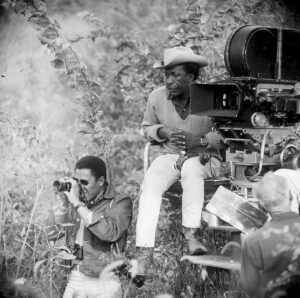
Unknown Photographer Copyright: Courtesy of and Copyright The Gordon Parks Foundation.
TOPEKA – Humanities Kansas recently awarded $5,745.00 to the Gordon Parks Museum in Fort Scott to support the “Learning Tree Film Scene Location Trail” project. Kirk Sharp serves as project director.
The project is a series of signs located at the different scene locations where the filming of The Learning Tree took place. The signs will also include QR codes along with a virtual tour of identified 12 different scene locations of The Learning Tree Film.
The Gordon Parks Museum has also received a grant from the Fort Scott Area Community Foundation to assist with funding support for this project as well.
Currently, we are in the first phase of our timeline that includes taking current photos of the locations along with researching and obtaining other photos with text information. The completion goal date for this project is by August 15, 2021.
This historical film by Warner Bros. Seven Arts, was the first time a major motion picture movie filmed in Hollywood was directed by a black film director. Fort Scott, KS’s native son, Gordon Parks was that person. This film was partially filmed in 1968 on location in Fort Scott and the surrounding area to include Mound City, KS. The film was released in 1969. The film was based on a semi-autobiography novel with the same title that Gordon Parks wrote in 1963. The story, based on Gordon’s childhood in Fort Scott, KS, is about a boy growing up in a difficult time in segregation and poverty. This film was placed in the Library of Congress National Film Registry Classics in 1989 as one of the top 25 important films. The film continues to be very important today.
Over hundreds of people from both Fort Scott and Mound City, KS area were part of the film as film extras, with a few having speaking parts in the film. This film holds fond memories of those that were in
the community when the filming was taking place. Most of the scene locations are still here and are accessible to drive or walk to.
“We are very excited about this project and much honored to be able to receive this awarded grant to give tribute to this wonderful film. The Learning Tree film is a part of Fort Scott and Mound City history that residents in these communities can be very proud to be part of; along with its Kansas native son, Gordon Parks.” said Kirk Sharp, Gordon Parks Museum Executive Director.
“Humanities Kansas supports projects that illuminate local history,” said Julie Mulvihill, Humanities Kansas Executive Director. “This project’s interactive signage will bring Parks’ film to life for community members and visitors alike.”
About Humanities Kansas Humanities Kansas is an independent nonprofit spearheading a movement of ideas to empower the
people of Kansas to strengthen their communities and our democracy. Since 1972, our pioneering programming, grants, and partnerships have documented and shared stories to spark conversations and generate insights. Together with our partners and supporters, we inspire all Kansans to draw on history,
literature, ethics, and culture to enrich their lives and serve the communities and state we all proudly call
home. Visit humanitieskansas.org.
